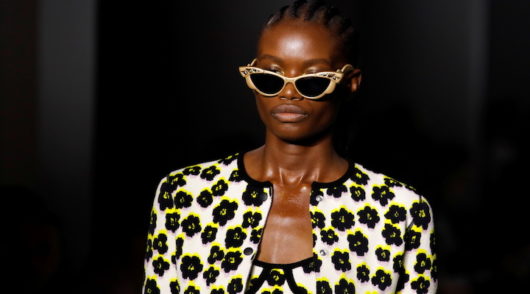
After several attempts to break into the luxury retail online landscape, Chinese giants Alibaba and JD seem to have decided that their best bet for connecting with Chinese consumers was to ally themselves with two fledgling International challengers: Yoox Net-a-Porter and Farfetch.
What did they find so appealing about these two platforms? And why couldn’t they simply continue to focus on building their own luxury channels, leveraging their almighty capabilities and reach?
A recent survey conducted by OC&C provides some insights on how luxury brands in China have moved online.
First, we found that international platforms like Shopbop, Farfetch and Net-a-Porter enjoy very high awareness among Chinese luxury shoppers. While the level of transaction is lower than on major Chinese platforms, Chinese shoppers’ overall experience on these international platforms scored highly – in the top five. This is ahead of the big, generalist platforms and the luxury brands’ own sites.
The main reasons behind these high scores are the ability of these international platforms to guarantee product authenticity, offer a wider choice of brands and products, and deliver more luxurious experience overall.
It is striking that these international platforms have succeeded in bridging two trust gaps, something that has so far eluded the major Chinese platforms. First consumers need to be convinced that they will be able to get genuine products with the right level of services and convenience. Then brands need to be convinced that their products will be offered in an appealing environment among “same class” brands, without intrusion from non-luxury promotions and adverts.
A result of these alliances is that we may start to see increasing collaboration between Richemont Group brands and Alibaba platforms, including Richemont-owned Yoox Net-A-Porter, along with Kering Group brands and JD.com affiliated platforms, including Farfetch.
Meanwhile, the LVMH group is quietly active through its private equity investment arm L Catterton, which owns a stake in Secoo – the most successful home-grown Chinese luxury platform so far. And guess who else is a big shareholder of Secoo.com? JD.com. It is a surprisingly small world and it is not yet clear who will win the luxury online battle.
Let’s take a look now at the context in which these moves have been happening.
Euromonitor data and OC&C’s own analysis show that online’s share of sales by luxury brands in China is just 9 per cent. This is quite low compared to other categories like general apparel and footwear, which is close to 29 per cent or beauty and personal care at 23 per cent. Even for packaged foods, online accounts for 10 per cent.

Surprisingly, this is a category where online sales account for a lower share in China (9 per cent) than in other developed markets such as the UK (16 per cent) and the US (15 per cent). Usually, the share of online sales in any category in China is higher than in any other global market.
That said, the bulk of the growth evident in the China luxury market is coming from online sales, at a pace close to 20 per cent and at a time when the total luxury market for fashion and accessories is growing at just 3 to 5 per cent per annum.
Now we can understand why this field is grabbing so much attention.
When it comes to e-commerce, luxury brands have been cautious, particularly in China. For example, we found that only half of the luxury brands we reviewed offered e-commerce capabilities on their own-brand websites in China. This is starting to change, however: even Hermes recently announced the launch of an e-commerce facility on it Chinese website.
Meanwhile, the number of luxury brands that have a “legitimate” presence on third-party websites like Tmall or JD – or on their specialised luxury sub-platforms Pavilion and Toplife – remains small. The highest profile of these brands are Burberry which opened a flagship store on Tmall and Fendi on the JD platform. So far, only a few luxury brands have followed their lead.
Instead, most brands have preferred to test the waters through temporary mini-programs on WeChat that enable them to reach out to new customers while keeping full control of their data for further CRM and funnelling to their online and physical stores – something that Tmall and JD are much less flexible about.

Chinese consumer behaviour is also changing rapidly
While just 1 per cent of online shoppers buy luxury goods only online, 36 per cent of Chinese luxury shoppers in the OC&C survey already buy luxury products across both online and offline channels.
This figure reaches nearly 60 per cent for Gen Z customers (those born after 1995), which is good news for brands because GenZ customers are big spenders on luxury goods, more so than millennials (born between 1980 and 1994) and GenX (born between 1965 and 1979). It points to strong future growth.
Surprisingly, our survey showed that price and promotions are not key drivers for purchasing luxury products online. Rather than price, convenience and breadth of assortment are the key reasons. And assortment means different things to different generations. GenX shoppers and millennials are keen on a wide breadth of brands and products to choose from, while Gen Z shoppers attach more importance to character, personality and unique design. This is evidenced by their enthusiasm for independent designer brands like Off-White, Vetements, and Supreme. Instead of getting what “everybody else already has”, they want to buy the latest in-season products as a unique statement of their personality.
Authenticity is of paramount importance for GenX and Millennials, as they have been more exposed to fake products, whereas GenZ are a bit less sensitive to it, maybe because they have not been affected as much.
Being present on the right platform is important to luxury brands in China as it influences consumers’ perception of a brand’s “luxuriousness.” Just as in the physical world, brands worry about their adjacencies in malls, the same is true online. Multi-brand platforms have worked hard to build trust with brands in relation to authenticity and to guarantee a “clean” online environment.
Customers are also demanding convenience, driven by their experience in other categories. This may explain why the Chinese versions of international platforms like Net-a-Porter or Farfetch, were rated so high for choice and convenience. While luxury brands’ brand.com sites in China are highly trusted by customers, the service level they offer is lagging behind third-party platforms
Our survey showed that better choice – with more brands, product and exclusive offerings – as well as the convenience of being able to chat with a rep, having flexible payment options and easy returns were the key reasons driving online luxury purchases.
For offline shopping, consumers were focused on authenticity, service (pre-sale and advice, after-sale) and the overall shopping experience.
Merging channels
Online and offline channels are no longer separate in the eyes of consumers. They offer complementary and interconnected experiences that “require each other” to fulfill customer needs on different occasions, in a convenient and seamless way across multiple touch points. The co-existence of the two channels, and the blurring of the lines between are here to last and prosper.
The challenge for luxury brands is to find the right balance between their online and offline presence. It is no longer about setting up an “e-commerce department” separate from other channels – it is all about linking online and offline to create a seamless multi touch-point journey. Luxury brands’ shift toward an omni-channel business model is both necessary and inevitable.
- Pascal Martin is a partner and Veronica Wang an associate partner at OC&C Strategy Consultants.






